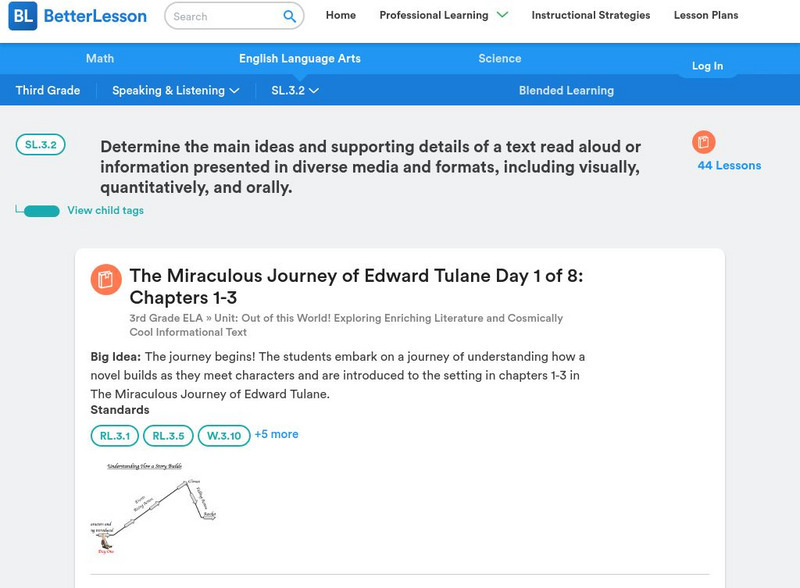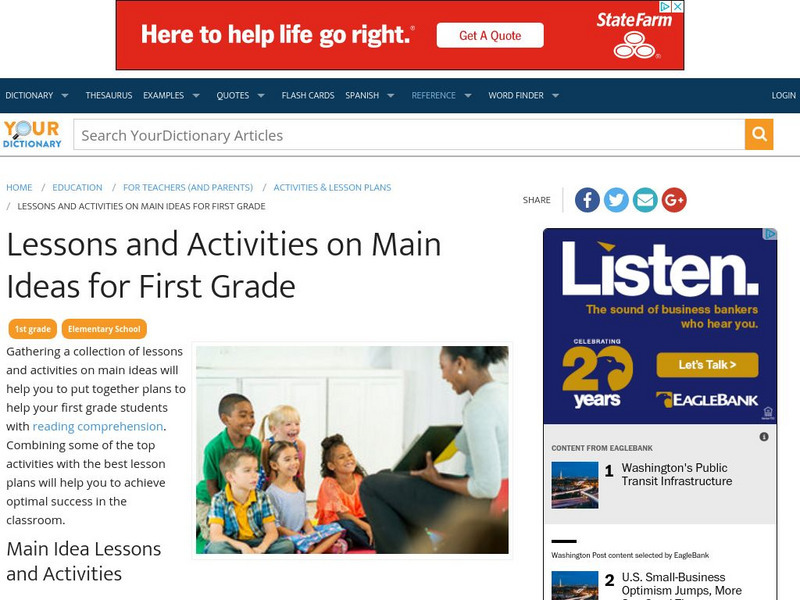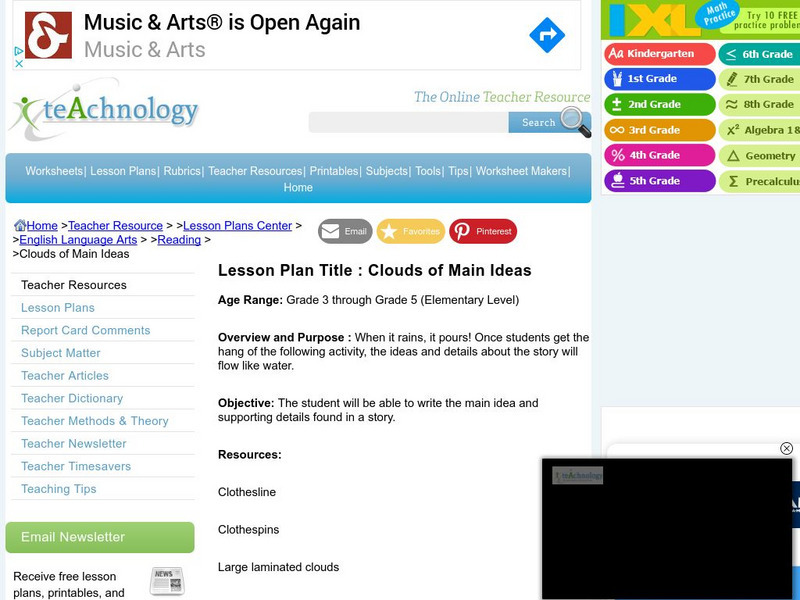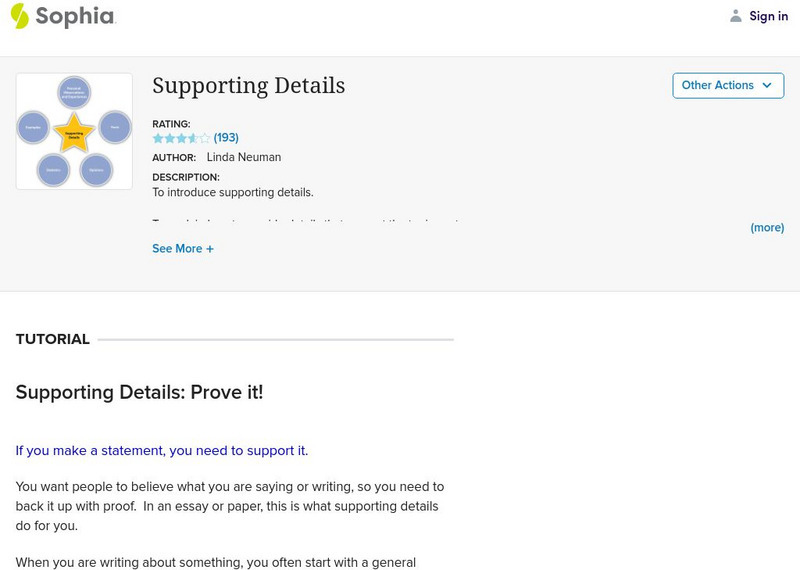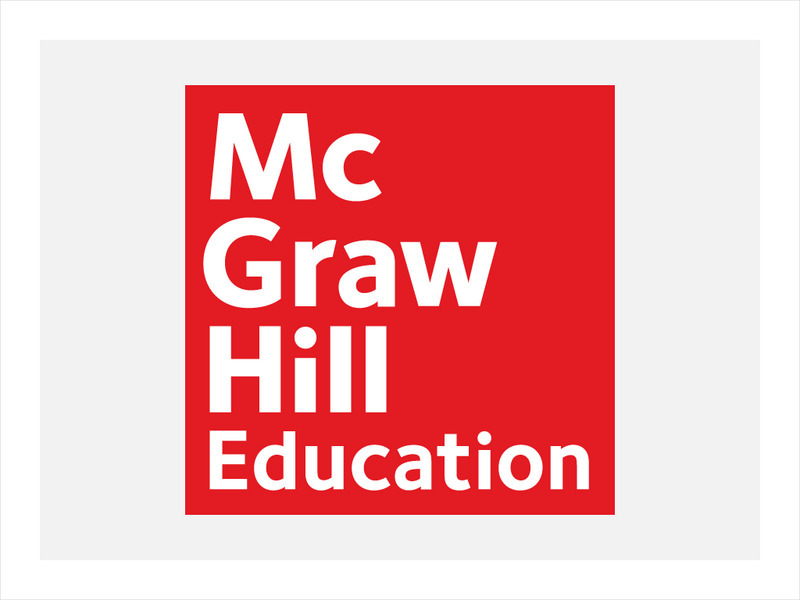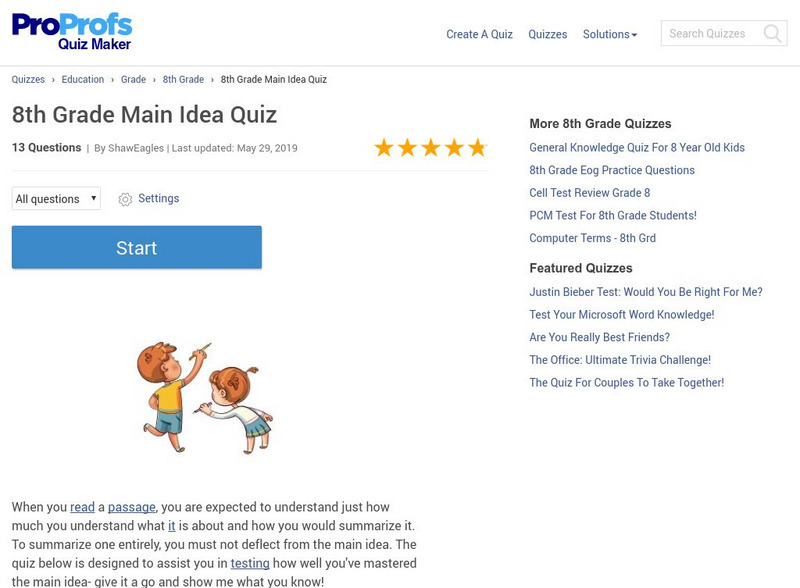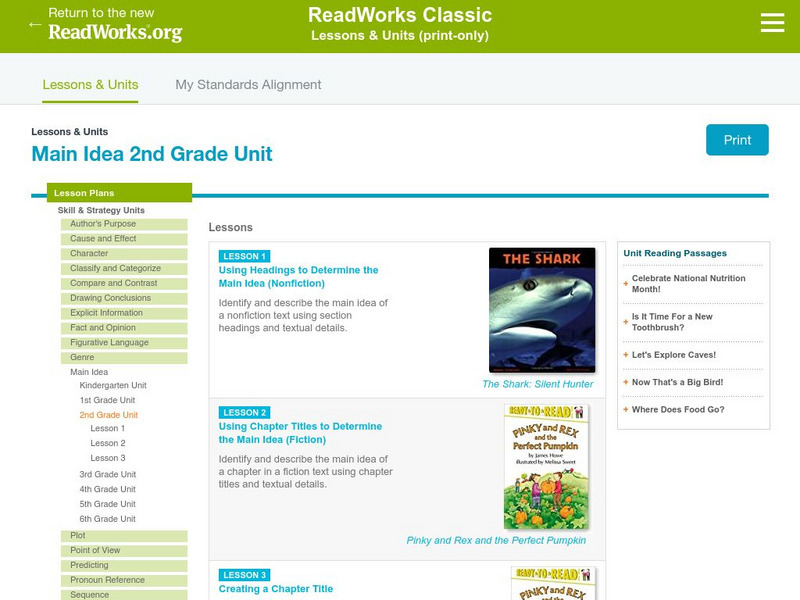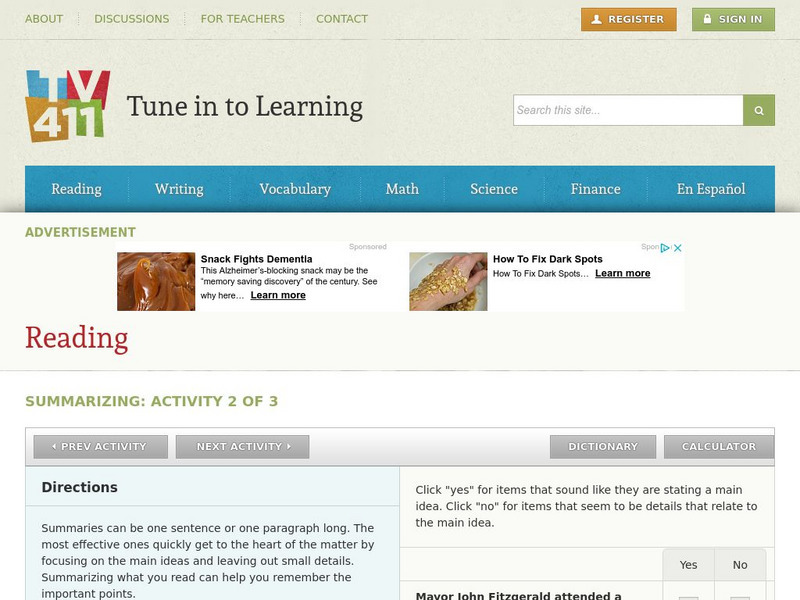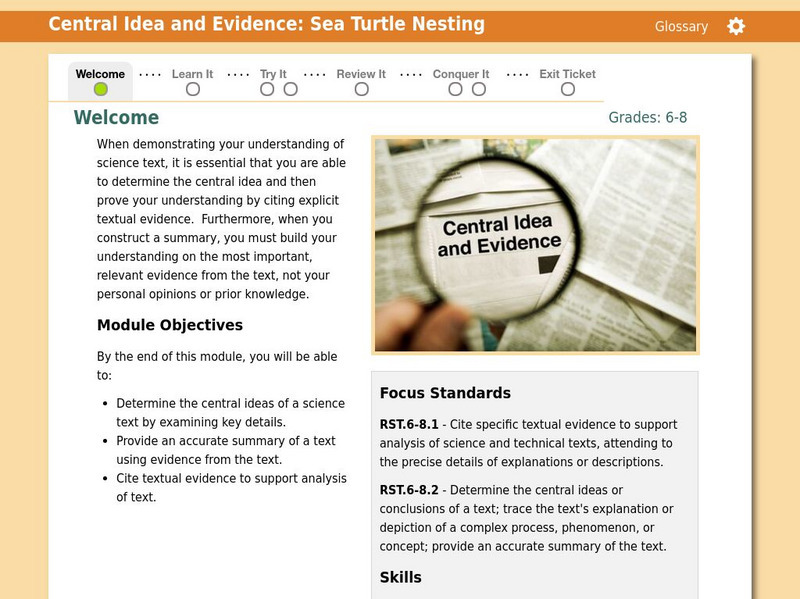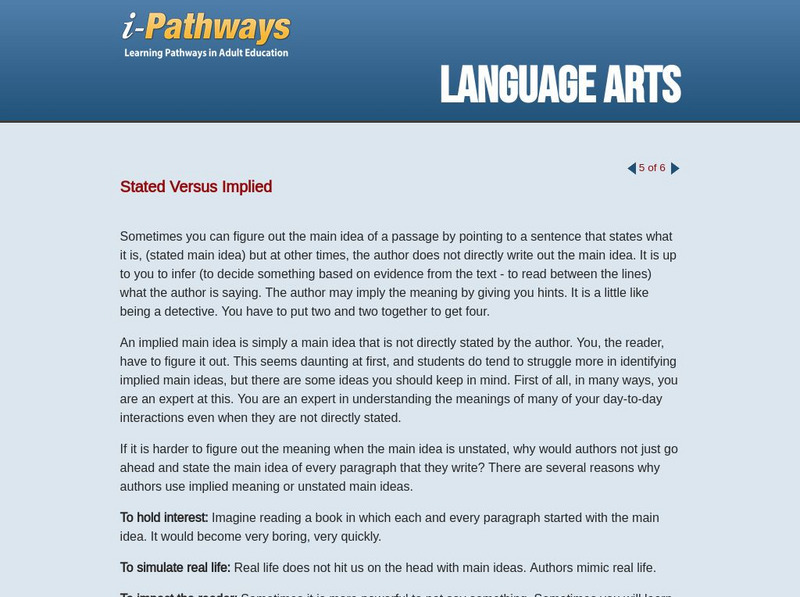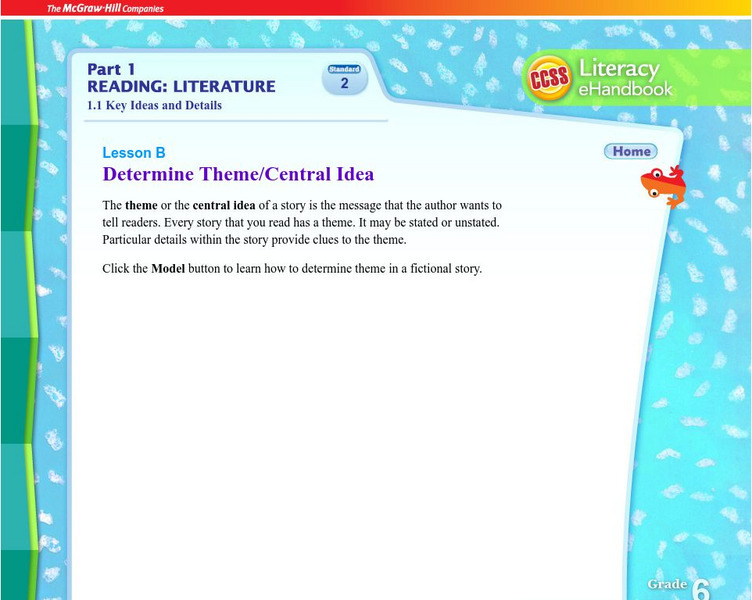Better Lesson
Better Lesson: Sl.3.2: Determine the Main Ideas and Supporting Details of a Text
Links to 44 lessons and activities that build student skills in standard SL.3.2: Determine the main ideas and supporting details of a text read aloud or information presented in diverse media and formats, including visually,...
Curated OER
Mc Graw Hill: Informational Text: Determine Central Ideas and Supporting Details
Read a short informational text and determine the main idea and supporting details. Click to check your answers then click on Practice.
Love To Know Media
Your Dictionary: Lessons and Activities on Main Ideas for First Grade
This site offers links to several lesson plans for teaching main ideas to first and second graders; it also provides and explains some activities for teaching the main idea to first graders.
Curated OER
Mc Graw Hill: Part 2 Reading: Determine Main Ideas and Supporting Details
See an example of how to determine the main ideas and supporting details of a story.
Teachnology
Teachnology: Lesson Plan: Clouds of Main Ideas
In this lesson for 3rd to 5th grade, after reading a story, student write the main idea on a cloud and clip it to a clothesline or bulletin board, and other learners can write supporting details on raindrops and clip them to the correct...
SMART Technologies
Smart: Main Idea & Details
This interactive lesson offers clarification and practice in the realm of main ideas and details.
Sophia Learning
Sophia: Supporting Details
This tutorial focuses on supporting details using a video of a paragraph from a book showing the topic sentence and two strong, reliable, supporting details. This is followed by a slideshow that stresses the need for variety in the types...
McGraw Hill
Mc Graw Hill: Informational Text: Determine Central Idea and Supporting Details
To understand a text, you must understand the central idea of the story. Learn how to recognize the central idea and supporting details with this article. Click the links at bottom right.
ProProfs
Pro profs.com: 8th Grade Main Idea Quiz
An interactive quiz with four short passages and thirteen multiple choice and extended response questions focusing on main ideas and supporting details. Students can access all passages and questions without an account, but a free...
Read Works
Read Works: Grade 2: Three Lesson Unit: Main Idea
[Free Registration/Login Required] A series of three lesson plans designed to teach students to identify main ideas through headings and chapter titles, and then to write appropriate titles of their own. Lessons are based on the books...
Education Development Center
Tv411: Summarizing Activity 2
This activity asks students to differentiate between main ideas and supporting details.
Thinkport Education
Thinkport: Central Idea and Evidence: Sea Turtle Nesting
Students practice finding the central idea and summary of a nonfiction piece about sea turtle nesting.
Other
I Pathways: Language Arts: Stated Versus Implied
Learn about the difference between a stated main idea and an implied main idea. Then, practice finding the stated and implied main ideas in two short texts.
Curated OER
Mc Graw Hill: Reading Literature: Determine Theme/central Idea
A definition of theme or central idea along with a link to a practice activity. CCSS.ELA-Literacy.CCRA.R.2
Polk Brothers Foundation Center for Urban Education at DePaul University
De Paul University: Center for Urban Education: Inaugural Address by John F. Kennedy [Pdf]
This is a one-page nonfiction excerpt from JFK's Inaugural Address on January 20, 1961. It is followed by an open-ended question which requires students to provide evidence from the story; it includes underlining the most important...
Better Lesson
Better Lesson: Frog and Toad Are Friends
In this activity for early readers, students will describe the major events in the plot, describe the characters, and ask and answer questions about the first chapter in Frog and Toad Are Friends---Spring.
AdLit
Ad lit.org: Classroom Strategies: Seed Discussion
A Seed Discussion is a two-part strategy used to teach students how to engage in discussions about assigned readings. In the first part, students read selected text and identify "seeds" or key concepts of a passage which may need...
